The Polikarpov I-16 was a revolutionary Soviet fighter aircraft introduced in the early 1930s. Designed by Nikolai Polikarpov. First Flight was in 1933, and it was introducted in 1934 as a Fighter aircraft for Soviet Air Force, but also used by the Spanish Republican and Chinese Nationalist Air Forces. It was the first company’s monoplane design and one of the world’s first low-wing cantilever monoplanes with retractable landing gear to enter service. Equipped with a radial engine, such as the Shvetsov M-25, licensed version of the Wright R-1820. Early versions had two 7.62 mm machine guns, later variants had 20 mm ShVAK cannons and rockets. The initially open cockpit, later enclosed cockpit was adopted.
In the Spanish Civil War (1936–1939) she gained fame as the “Mosca” (Fly) by the Republicans, and “Rata” (Rat) by the Nationalists. It had a lot of successes also in the Sino-Japanese War with Chinese forces against the IJA and IJN aviations. In Soviet service, despite a production of 10,292 (6,848 fighters and 3,444 trainers) it was obsolete by 1941, but still in frontline service during the German invasion, Operation Barbarossa. It was ahead of its time in the early 1930s, often compared to the German Bf 109 in terms of innovation, but quickly outpaced by newer designs. Howeter its compact size, agility, and radical design made it a milestone in fighter development.
The I-16
The Polikarpov I-16 (Russian: Поликарпов И-16) was a Soviet single-engine single-seat fighter aircraft, world’s first low-wing cantilever monoplane fighter with retractable landing gear operational, hugely influential fighter design. Introduced in 1934, it gradually formed the backbone of the Soviet Air Force, and was the most common when World War II broke out. Nicknamed “Ishak” or “Ishachok” (“donkey” or “burro”) by Soviet pilots, it figured prominently in the Second Sino-Japanese War, Battle of Khalkhin Gol, Winter War and Spanish Civil War (there it was called the Rata (“rat”) by Nationalists or Mosca (“fly”) by Republicans). The Finns called it Siipiorava “(flying squirrel)”. It was not perfect, being very agile, rugged, but too slow, not rookie pilot friendly, and by the summer of 1941, desperately ouclassed by the Bf 109E and later G.

A Baltic fleet I-16 in 1941, 71 IPA, Sergeant VP. Segalayev, being serviced by his mechanic between operations.
However, if the Navy (all four fleets, and reserves) was provided with fighters to defend the main bases ans HQs, sectors associated with their respective Baltic, Northern, Black Sea and Pacific fleets, they were less well equipped than the Red Air Force in general, with just 778 I-16 fighters as of 1941 (on 10,000+ total). If the bulk was made of the Type Type 5, all types were represented with the only naval aces, like Alexkey Antonenko and Boris Safonov having the Type 24. See below for the Types. The Navy was among the few which deployed operational “aircraft carriers”, five ZvenoSPB entered service with the 2nd Special Squadron, 32nd Fighter Aviation Regiment, 62nd Aviation Brigade of the Black Sea Fleet in Yevpatoriya. It worked out tactics to target axis warships.
Naval I16 Design specifics

Most I-16s were delivered from the factory painted olive green (upper surfaces), with light blue undersurfaces. Then specific paintings were made if available. Those with a green livery received a camouflage of dark brown, well defined or by airbrush splotches. But the “standard”, regulatory Marine paint was a light grey overall, without light blue undersides. Stars were sometimes painted by hand and outlined in black. Patriotic slogans were also sometimes painted, and unit emblems, victory crossed sported. The V-25 propeller blades were in aluminum, with a spinner in olive green, but in blue seemingly in this case. Until the summer of 1941, national insignia were painted on the upper and lower surfaces of the wings and fuselage with a thin black outline and tactical number on the rudder with a white outline.
In operations, the flaps covering the landing gear wheels were often removed in the field as very often damaged. Camera guns started to be installed on the type 5, in a fuselage fairing behind the pilot’s cabin. Sqn leader Type 5s alsoi had when available a shortwave radio station RSI-3 with a small mast for a top antenna on the vertical tail. The RSI-3 comprised a receiver and a transmitter with the rest of the squadron only having a receiver or no radio at all. It was powered by a RUN-30 battery, with five fixed frequencies set on before takeoff. Some Type 5s had small trim tabs added on the inside of the ailerons, later standard.
Other than that, all Types on service with the four Navies were “stock” from the air force production without any changes, no folding wing, no tail hook, additional navigation or sea rescue equipment. They coukd be equipped in 1941 with underwings racks to carry bombs or rockets. Details for the Type 17 are seen below:
⚙ I-16 Type 17 1938 specs |
|
| Gross Weight | 1425.5 kgs |
| Max Takeoff weight | 1810 kgs |
| Lenght | 6,074 mm |
| Wingspan | 9,004 mm |
| Height | 3,250 mm |
| Wing Area/loading | 14.54 m²/124 kg/m² |
| Engine | M-25V, 750 hp /2900m |
| Top Speed, ground/alt. level | 385 km/h /425m, 448 km/h /2700m |
| Range | 417 km |
| Climb Rate | 4.36/3000m; 7.7/5400m |
| Ceiling | 8240 m |
| Armament | 2x 7.2mm ShKAS machine guns, 2x 20mm ShVAK guns |
| Crew | 1 pilot |
Variants
- Type 4: Wright Cyclone SGR-1820 F-3 or M-25 engine, closed cockpit, 2×7.62 mm PV-1 MGs
- Type 5: New engine cowling with individual exhaust pipes, closed pilot’s cockpit.
- Type 6: M-25A engine, reinforced airframe, closed cockpit
- Type 10: M-25V engine, open cockpi, retractable ski landing gear, 4×7.62 mm ShKAS LMGs*
- Type 12: 2x 20-mm ShVAK cannons, 2x 7.62-mm ShKAS machine guns;
- Type 18: M-62 engine, variable pitch propeller, tail wheel, 4 x 7.62 mm ShKAS MGs
- Type 27: Type 18 variant 2 x 20 mm ShVAK, 2 x 7.62 mm ShKAS
- Type 24: M-63 engine, reinforced wing, external fuel tanks, 4 x 7.62 mm ShKAS
- Type 29: Type 24 variant: 2 x 7.62 mm ShKAS, one 12.7 mm BS HMG hub.
*Taking into account earlier experience, the model 1937 was strengthened, which together with the new engine and enhanced armament increased flight weight to 1,700 kg, while the speed remained unchanged, rate of climb and ceiling decreased. The Type 10 received skis instead of a standard chassis for winter operations, but still usable in other seasons. They were retractable in flight, pressed tightly to the center section, almost flush with its surface. The ski were slightly heavier than wheels, so flight characteristics were practically the sam, but when the drag caused lower spee to 60-80 km/h.
The I-16 aircraft went through all possible evolutions and the 1939 production model with the M-62 engine was caable of 490 km/h with a fairly powerful armament and wing area of 14.54 sq. m, but flight weight increased from 1,311 kg to 2,000 kg. Further development became possible with different parameters implemented the next N.N. Polikarpov fighters, the I-180 and I-185.
Evolution

Above, the I-180-2 prototype. Never standardized nor produced as in the summer of 1941 this type was believed to have reach the summum of its development and production was refocused on more promising Lagg, Migs and Yaks with inline engines. The I-180 saw tne production models for combat tests and three prototypes in 1938 (first flight December) until a small production took place in 1940-41 with various radial engines. The rear fuselage was almost unchanged apart a new cockpit, but the more massive engines changed the balance of the plane, and the development was protracted and marred with accidents, notably with the death of the star Soviet test pilot Valery Chkalov in one of the prototypes.
Despite of this, historians regretted these accidents led to a cancellation, as it was more advanced and had far less “teething problems” than its counterparts, and could have been built much earlier. With their Tumansky M-88R 14-cyl. twin-row of 1,100 hp, they could reach confidently 585 kph, so in Me-109’s territory while keeping the agility of the “mule”. It was further developed as the I-185 which first flew in January 1941, and being powered Shvetsov M-71 18-cyl. reached 1,492 kW (2,001 hp) for an astounding top speed of 780 kph and armed with three 20 mm cannons. It seems this time rival Yakovlev killed the project in the eyes of Stalin.
If built, the projected soviet aircraft carriers planned in 1941 would have received a navalized version on the 1938 Project 71 and 1939 Project Kostromitinov carriers. Since both were never greenlighted or laid down, development of a naval version of the I-180 or successor remained hypothetical, albeit logical due to the small size of these fighters, maximizing capacity. The issue was the rear cockpit made landings extremely hazardous. The problem was so acute in the USN it prevented the use of the Vought F4U Corsair until new british-developed landing procedures were adopted by mid-1944.
Service

Fighter pilot Boris Safonov and photojournalist Yevgeny Khaldey at the Vaenga airfield. The photo is taken against the background of the aircraft of Senior Lieutenant Alexander Kovalenko — I-16 type 24, tail number 11 “For Stalin!”, serial number 24P21891. Military unit — 72nd SAP (mixed aviation regiment) of the Northern Fleet aviation. A PAU-22 camera machine gun is mounted on top of the fuselage behind the cockpit, which was not common at the time. This photo is also interesting because in a couple of minutes there will be a raid by German aircraft on the airfield and a machine gun burst will fall literally a few steps from the photographer.
The Air Forces of the Northern, Baltic and Black Sea Fleets were concentrated in the western part of the Soviet Union, numbering 778 fighters in all, of which almost half or 344 were I-16s. At that time, there were 155 I-16s in the Pacific Fleet aviation, 110 such aircraft in naval flight schools. The navy and naval aviation schools also had 145 UTI-4s as of 22 June 1941. Unlike army data, more precise naval data gave an idea of the I-16 types:
⚙ Assignations |
||||||
| Baltic | Black Sea | Northern | Pacific | River Ft. | Ft. Schools | Directorate |
| 208 | 169 | 18 | 166 | 35 | 178 | 1 |
Baltic Sea Fleet: 38 T5, 10 T10, 28 T17, 15 T18, 33 T24, 5 T27, 6 T28, 45 T29, 28 UTI-4: 4 GvIAP, 100 ОАE Soviet Navy
Black Sea Fleet: 39 T5, 9 T10, 5 T17, 16 T18, 43 T24, 21 T28, 15 T29, 21 UTI-4
Northern Fleet: 16 T24, 2 UTI-4: 2 GvSAP, 27 IAP, 72 SAP and Kolsky District, Murmansk Oblast
Pacific Fleet: 74 T5, 16 T10, 10 T12, 33 T24, 7 T28, 26 UTI-4
Riverine Flotillas Squadrons: 9 T5, 10 T12, 1 T28, 9 T29, 26 UTI-4
Flight Schools: 26 M22, 66 T5, 16 T10, 4 T28, 2T29, 3 UTI-2, 61 UTI-4
Directorate: 1 Type 10
In July 1941, Barbarossa day, in the Baltic Military District, I-16s of the 21st IAP claimed 9 German aircraft, the 15th IAP same, 10th IAP, 7 claimed. In the Odessa Military District (Black Sea Fleet), the 55th IAP based in Beltsy, had 10 victories by the end of the day, the 67th IAP in Belgrade had 15.
When I-16s started to receive rockets, the first air to air successes were cashed in: Eight German Ju-88 aircraft flying into Sevastopol were reportedly attacked by five Black Sea Fleet Air Force Polikarpov I-16s in November 1941. Four I-16s launched all 24 of their rockets at the bombers. One caught fire and plunged into the ocean. The others escaped after setting off their bombs over open terrain, missing their objective completely. These rockets were completely innacurate but they broke apart the bomber formation. Usually they were used for ground attack in support.

Soviet I-16 Type 24 fighters of the 4th Guards Aviation Regiment of the Baltic Fleet Air Force at the Novaya Ladoga airfield, Leningrad Oblast. The photo was taken in March-April 1942. The 4th Guards Aviation Regiment of the Red Banner Baltic Fleet sported Type 24s. Shot here is squadron commander, Guards Senior Lieutenant G.D. Tsokolaev. The photo was taken, presumably, in the spring of 1942. During the war, G.D. Tsokolaev made more than 500 combat sorties, with more than 100 attacks, claiming 10 axis boats, shot down 26 enemy aircraft, (inc. 6 personally and 20 as group leader), and conducted 82 reconnaissance missions deep behind enemy lines. He was awarded the title of Hero of the Soviet Union with presentation of the Order of Lenin and Gold Star medal in June 1942.
The German and Romanian aviation in the southern sector was opposed by the Air Force of the Odessa Military District and Air Force of the Black Sea Fleet, starting the war in 1941 with 169 I-16s alone. However they were reinforced by Army squadrons as well. The immediate cover of the border was provided by fighters of the 20th and 21st mixed air divisions. Almost 300 I-16s of these divisions were the basis of the fighter aviation of the Odessa Military District. On the first day, the 21st mixed air division (made of Navy squadrons) shot down more than 20 enemy aircraft and after a month of fighting, the division had 150 victories to its credit. By this time, when the advance of the Romanian troops was stopped on the approaches of Odessa, the main force holding back enemy aviation on the southern sector of the front became the 69th Fighter Aviation Regiment from the 21st Airborne Division.
Leningrad was subjected regular bombings with pilots of the 7th IAK provided air defense for the city, and the closely located front and ships of the Baltic Fleet were protected by the local naval aviation, 13th IAP which probably was the most effective. Pilots were veterans of the Hanko Peninsula, covering the garrison of the peninsula and ships of the Baltic Fleet. The airfield was in the range of Finnish artillery and often fired upon so personnel had to move in underground shelters. Pilot-inspector of the 13th IAP Aleksey Antonenko arrived at Hanko on June 25 and in his first mission, downed a Ju-88 reconnaissance aircraft. He recorded 11 personal victories on his I16 type 29. But losses were still heavy, and the last I16 of the Navy were still fighting in 1945, despite limited maintenance and the lack of spares, as production ceased in the summer of 1941. It was easier to cannibalize shot down I16s.
The Soviet Navy’s Flying Aircraft Carriers
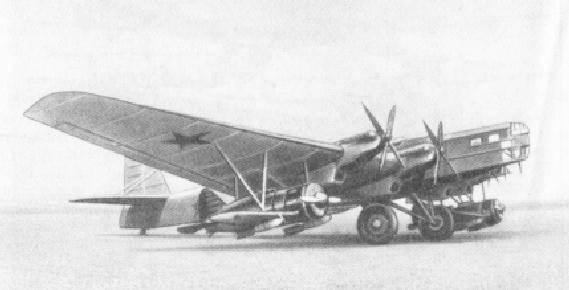
Five Zvenos (each was a TB-3 bomber carrying four I-16s) were deployed and trained for the Black Sea Fleet in 1940-41. In January 1941, the fleet command cooled towards this unusual formation, called by its squadron commander “Shubikov’s Circus”. They ordered these to be disbanded, only to be reconstituted by the summer of 1941. The Black Sea Fleet aviation repeatedly carried out bombing strikes on Romanian territory, with the the most important targets being the railway bridge over the Danube River near the Cernavoda station, 60 km west of Constanta. It was the largest bridge structure around and the Ploiesti-Constanta oil pipeline passed under the lower deck of the bridge.
Repeated attempts by the 63rd Bomber Brigade of the Black Sea Fleet with SB and DB-3 bombers failed, and it was then decided to urgently restore Vakhmistrov’s Zvenos for combat use. On July 22, an order came from Moscow to press on and by July 26, the first sortie took place with a first strike carried out on the port of Constanta in broad daylight, with two TB-3s approaching the Romanian coast and at a distance of 40 km before dropping their four I-16s. The group commander, Captain Shubikov, reached the city, calmly flew around the target, an oil refinery, in front of the Messerschmitts patrolling in the distance, and dropped bombs. Unlike bombers, this was accurate. All four safely left the area and flew away, making an intermediate landing in Odessa, and flew back to Yevpatoriya.
The first of the two bridge raids took place on 10 August 1941, with I-16s fitted with additional 95-liter (25 US gal) underwing fuel tanks for 35 minutes of added flight time. But on the three Zvenos which took off, one had to turn back due to the TB-3 engine issues, the other two launched their fighters 15 km (9.3 mi) from the Romanian coastline. They successfully dive-bombed the bridge from 1,800 m (5,900 ft) and returned home with no losses despite heavy AA fire. The second raid on 13 August 1941 saw all three Zveno-SPBs reaching the target. Six I-16s scored five direct hits on the bridge and completely destroyed a span. But they failed to crumbled it. On the way back, they strafed Romanian infantry near Sulina and reached Eupatoria with no losses. The two additional Zveno-SPB were brought to operational status.
The only limiting factor was the TB-3 carrier’s Mikulin AM-34FRN engines, as other versions were not powerful enough to get these airborne when loaded with all four I-16s, two above, two below the wings. On 16 August 1941, Admiral Nikolai Kuznetsov asked Joseph Stalin agreed for additional AM-34FRN-engined TB-3s from the Air Force for Zveno-SPB carriers, but the request was denied due to heavy losses in the opening days of the war. These five Zvenos continued sorties, destroying a dry dock in Constanţa on 17 August, a bridge across the Dnieper on 28 August, losing one I-16 . On one sortie, four Zveno-launched I-16s which engaged several Me. Bf 109s, shooting down two. But these missions ended by 1942 due to obsolete TB-3s and I-16s being too slow and vulnerable to the Luftwaffe. It is estimated that these “flying aicraft carriers” performed fro the Black sea fleet at least 30 combat missions. But they became rare after squadron commander Arseny Shubikov was shot down on October 1, 1941.
These missions were carried out by SPBs (Sostavnoi Pikiruyuschiy Bombardirovschik for “Combined Dive Bomber”, with a single TB-3-4AM-34FRN and two I-16s under the wings, each carrying 250 kg (550 lb) FAB-250 bombs. They were the only ones used in WW2 with success. But the most outlandish tests were those of the Aviamatka (“Airborne mothership”), the last of all six “zveno” tests with various aircraft, attachments and manoeuvers. The Zveno AM was the most extreme of thes “flying aircraft carriers” as each TB-3 carried two I-16s under the wings, two I-5s on top, one I-Z under the fuselage, mid-air. The first test was on 20 November 1935 under Vakhmistrov. He later proposed one with eight I-16s, but the TB-3 only took off with two I-16s under the wings. The remaining six would attach in the air but not all eight at one time, rotating in and out during flight as needed for attacks and resupply. They could indeed refuel from the Bomber. Mid-air dockings and fuel transfers were performed in 1938 on Zveno 6 and 7 but the optimal configuration was never completed and was found impractical and dangerous for the high command that forbade more tests in early 1941.
Navy’s I16 fighting to the last
The readiness of I16s forces could be broke down that way:
The Northern Fleet: 12/3 (May 42), 8/3 (June 42), 10/6 (Nov 42), 5/0 (July 43), 4/0 (Jan 44), 3/1 (June 44), 1/0 (Jan 45)
Baltic Fleet: 52/17 (May 42), 23/7 (June 42), 28/11 (Nov 42), 21/3 (July 43), 8/1 (Jan 44).
Black Sea Fleet: 27/0 (May 42), 14/8 (June 42), 8/2 (Nov 42), 3/1 (July 43), 12/0 (June 44)
Total: 91/27 (May 42), 45/18 (June 42), 46/19 (Nov 42), 29/4 (July 43), 19/4 (Jan 44), 15/1 (June 44), 1/0 (Jan 45)
Generic issues:
Initial service experience revealed that the ShKAS machine guns had a tendency to jam. This was the result of the guns being installed in the wings upside-down to facilitate the fit. The problem was addressed in later modifications. Evaluations from pilots confirmed the experience with prototypes. Controls were light and very sensitive, but abrupt maneuvers resulted in hazardous spins, albeit spin behavior was excellent. An aileron roll could be performed in under 1.5 seconds (roll rate over 240 degrees/second). The machine guns were fired via a cable and the required effort, coupled with sensitive controls, made precision aiming difficult. The rear weight bias made the I-16 easy to handle on unprepared airfields because the aircraft was rather unlikely to flip over the nose even if the front wheels dug in.
The I-16 however was a difficult fighter to fly, hnece it’s “donkey” nicknamed. Pilots complained of the poor visibility, as the canopy tended to become fouled with engine oil, and the moving portion was prone to slamming shut during hard maneuvers, which caused many pilots to fix it in the open position or remove it altogether. The front section was too close to the centre of gravity, and the pilot’s cockpit too far to the rear, make any landings hazardous. It also had insufficient longitudinal stability and in general was too unstable to fly the aircraft ‘hands off’. The pilots needed max concentration and focus at all times during flight.
Gallery
Author’s illustrations: Types and liveries

Type 24, Boris F.Sapanov 72SAP, Northern Fleet, summer 1941

I16 type 24, Genadij Tsokolaiev, 4GIAP, Baltic Fleet, Lake Ladoga April 1942

I 16 type 29, 71IAP Baltic Fleet 61 IABR., Sgt VP Segalayev
Additional photos

Baltic fleet

Baltic fleet

Type 24 6GvIAP Black Sea Fleet VM Borodin Crimea 1942
Resources
Books
V.B.Shavrov. History of aircraft designs in the USSR 1938-1950.
B.L.Simakov. Aircraft of the country of the Soviets. 1917-1970.
Encyclopedia-reference. Aircraft of the country of the Soviets.
Mikhail Maslov. “The King of Fighters”. Polikarpov’s combat aircraft.
Mikhail Maslov. Fighter I-16.
S.V.Ivanov. I-16. Combat “donkey” of Stalin’s falcons.
Links
i16fighter.ru
airpages.ru
airpages.ru
historicalreporter.ru
victorymuseum.ru
авиару.рф/aviamuseum
Polikarpov_I-16
fishki.net
asn.flightsafety.org
secretprojects.co.uk
The model corner


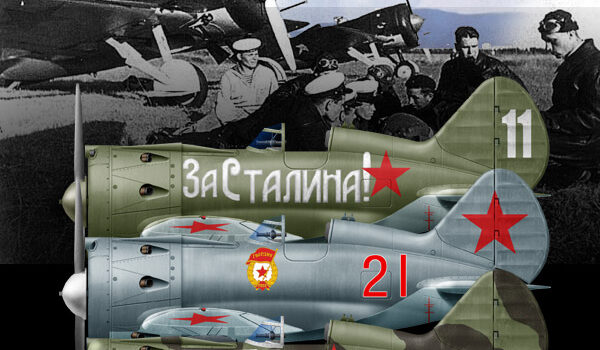

 Latest Facebook Entry -
Latest Facebook Entry -  X(Tweeter) Naval Encyclopedia's deck archive
X(Tweeter) Naval Encyclopedia's deck archive Instagram (@navalencyc)
Instagram (@navalencyc)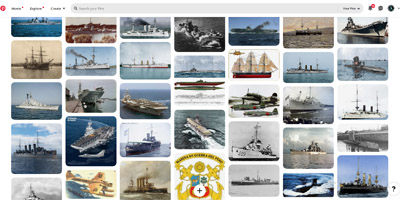

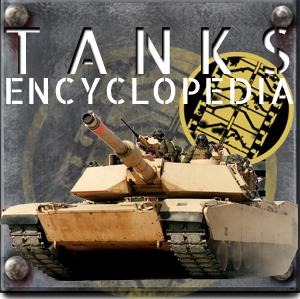
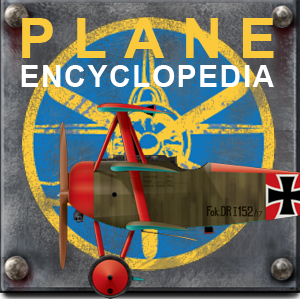
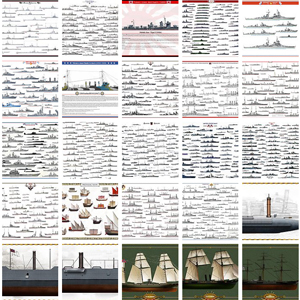
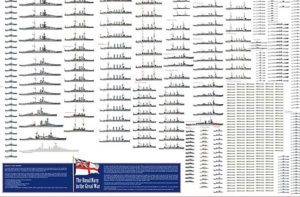
 French Navy
French Navy Royal Navy
Royal Navy Russian Navy
Russian Navy Armada Espanola
Armada Espanola Austrian Navy
Austrian Navy K.u.K. Kriegsmarine
K.u.K. Kriegsmarine Dansk Marine
Dansk Marine Nautiko Hellenon
Nautiko Hellenon Koninklije Marine 1870
Koninklije Marine 1870 Marinha do Brasil
Marinha do Brasil Osmanlı Donanması
Osmanlı Donanması Marina Do Peru
Marina Do Peru Marinha do Portugal
Marinha do Portugal Regia Marina 1870
Regia Marina 1870 Nihhon Kaigun 1870
Nihhon Kaigun 1870 Preußische Marine 1870
Preußische Marine 1870 Russkiy Flot 1870
Russkiy Flot 1870 Svenska marinen
Svenska marinen Søværnet
Søværnet Union Navy
Union Navy Confederate Navy
Confederate Navy Armada de Argentina
Armada de Argentina Imperial Chinese Navy
Imperial Chinese Navy Marinha do Portugal
Marinha do Portugal Mexico
Mexico Kaiserliche Marine
Kaiserliche Marine 1898 US Navy
1898 US Navy Sovietskiy Flot
Sovietskiy Flot Royal Canadian Navy
Royal Canadian Navy Royal Australian Navy
Royal Australian Navy RNZN Fleet
RNZN Fleet Chinese Navy 1937
Chinese Navy 1937 Kriegsmarine
Kriegsmarine Chilean Navy
Chilean Navy Danish Navy
Danish Navy Finnish Navy
Finnish Navy Hellenic Navy
Hellenic Navy Polish Navy
Polish Navy Romanian Navy
Romanian Navy Turkish Navy
Turkish Navy Royal Yugoslav Navy
Royal Yugoslav Navy Royal Thai Navy
Royal Thai Navy Minor Navies
Minor Navies Albania
Albania Austria
Austria Belgium
Belgium Columbia
Columbia Costa Rica
Costa Rica Cuba
Cuba Czechoslovakia
Czechoslovakia Dominican Republic
Dominican Republic Haiti
Haiti Hungary
Hungary Honduras
Honduras Estonia
Estonia Iceland
Iceland Eire
Eire Equador
Equador Iran
Iran Iraq
Iraq Latvia
Latvia Liberia
Liberia Lithuania
Lithuania Mandchukuo
Mandchukuo Morocco
Morocco Nicaragua
Nicaragua Persia
Persia San Salvador
San Salvador Sarawak
Sarawak Uruguay
Uruguay Venezuela
Venezuela Zanzibar
Zanzibar Warsaw Pact Navies
Warsaw Pact Navies Bulgaria
Bulgaria Hungary
Hungary

 Bundesmarine
Bundesmarine Dutch Navy
Dutch Navy Hellenic Navy
Hellenic Navy Marina Militare
Marina Militare Yugoslav Navy
Yugoslav Navy Chinese Navy
Chinese Navy Indian Navy
Indian Navy Indonesian Navy
Indonesian Navy JMSDF
JMSDF North Korean Navy
North Korean Navy Pakistani Navy
Pakistani Navy Philippines Navy
Philippines Navy ROKN
ROKN Rep. of Singapore Navy
Rep. of Singapore Navy Taiwanese Navy
Taiwanese Navy IDF Navy
IDF Navy Saudi Navy
Saudi Navy Royal New Zealand Navy
Royal New Zealand Navy Egyptian Navy
Egyptian Navy South African Navy
South African Navy






























 Ukrainian Navy
Ukrainian Navy dbodesign
dbodesign